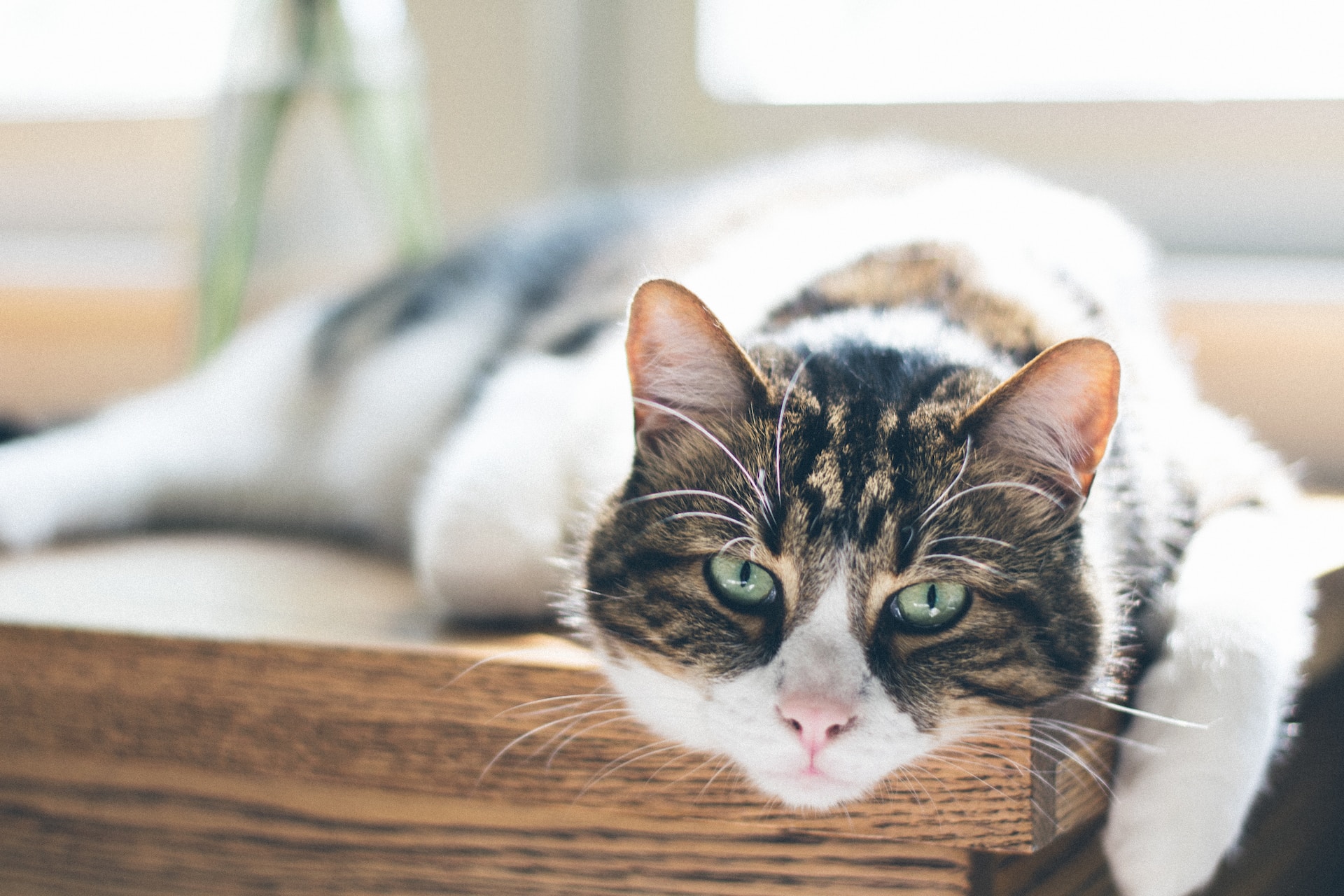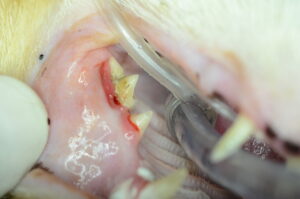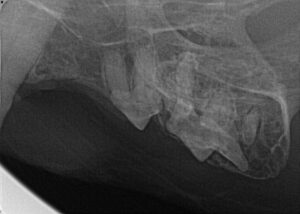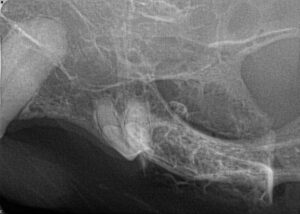
02 Aug Maxillary Swelling in an Old Cat Doesn’t Always Mean Mouth Cancer
Facial swelling is a common sign of oral cancer in cats. And because older cats are more prone to cancer, you may assume the worst if you notice a mass on your cat’s mouth. However, in some cases, mouth swelling can be a sign your cat has a different, treatable dental issue. Here’s an example of one of those cases.
Mouth Swelling in a Senior Cat: A Case Study
A 14-year-old male domestic shorthair was presented to Dr. Greenfield at Your Pet Dentist of Nashville (@ MVS) by the referring DVM for swelling of the left caudal maxilla. This swelling was firm and located below the eye and near the maxillary 4th premolar tooth (buccal or vestibular bone expansion). The pet was experiencing difficulty eating, but no weight loss was noted. Serum chemistries and CBC were within normal limits.
Oral Exam
An oral exam revealed firm swelling above tooth 208 (left maxillary 4th premolar tooth). The tooth was not mobile and the gingiva was inflamed. Other teeth did have gingivitis and extensive calculus/plaque.
Ruleouts should include the following:
- Neoplasia (squamous cell carcinoma is the most prevalent oral malignancy in cats)
- Periodontitis with osteomyelitis
X-Rays
Diagnostic radiographs were taken (see below). What do you see?
There is bone proliferation/expansion in the 208/209 area. Visible tooth resorption (type I) is noted on 208.
Treatment
Treatment plan:
- Extraction of teeth 208 and 209
- Biopsy bone and soft tissue apical to 208 submitted to CCOMP (Wisconsin)
- Perform alveoloplasty prior to closure (after biopsy)
Results
Post-extraction images:
Histopathology results: Chronic osteomyelitis and osteolytic remodeling of alveolar bone expansion. No evidence of neoplasia.
Comments: Swelling due to osteomyelitis can occur secondary to tooth resorptions and/or chronic periodontitis. This is referred to as expansile or alveolar osteitis. If you treat the underlying pathology, this resolves. However, knowledge of how to perform alveoloplasty post-extractions with proper flap design is imperative. Therefore, chronic swelling in an older cat should be worked up both radiographically and histopathologically to get a proper diagnosis. While tumors do occur in older cats, this individual outcome was quite favorable and this cat returned to a very happy lifestyle.
Barden Greenfield, DVM, Dipl. AVDC – Your Pet Dentist of Nashville
Ref: Bell CM, Soukup JW. Histologic, clinical and radiologic findings of alveolar bone expansion and osteomyelitis of the jaws of cats. Vet Pathology 2015; 52 (5): 910-918.
Images used under creative commons license – commercial use (8/23/2023). Photo by Nathan Fertig on Unsplash





